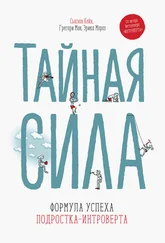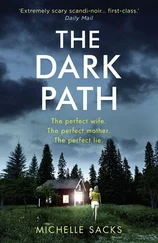20. “Cooperative learning”: Bruce Williams, Cooperative Learning: A Standard for High Achievement (Thousand Oaks, CA: Corwin, 2004), 3–4.
21. Janet Farrall and Leonie Kronborg: Janet Farrall and Leonie Kronborg, “Leadership Development for the Gifted and Talented,” in Fusing Talent—Giftedness in Australian Schools , edited by M. McCann and F. Southern (Adelaide: The Australian Association of Mathematics Teachers, 1996).
22. “Employees are putting their whole lives up”: Radio interview with Kai Ryssdal, “Are Cubicles Going Extinct?”, Marketplace , from American Public Media, December 15, 2010.
23. A significant majority of the earliest computer enthusiasts: Sarah Holmes and Philip L. Kerr, “The IT Crowd: The Type Distribution in a Group of Information Technology Graduates,” Australian Psychological Type Review 9, no. 1 (2007): 31–38. See also Yair Amichai-Hamburger et al., “ ‘On the Internet No One Knows I’m an Introvert’: Extraversion, Neuroticism, and Internet Interaction,” CyberPsychology and Behavior 5, no. 2 (2002): 125–28.
24. “It’s a truism in tech”: Dave W. Smith, e-mail to the author, October 20, 2010.
25. “Why could that boy, whom I had beaten so easily”: See Daniel Coyle, The Talent Code (New York: Bantam Dell, 2009), 48.
26. three groups of expert violinists: K. Anders Ericsson et al., “The Role of Deliberate Practice in the Acquisition of Expert Performance,” Psychological Review 100, no. 3 (1993): 363–406.
27. “Serious study alone”: Neil Charness et al., “The Role of Deliberate Practice in Chess Expertise,” Applied Cognitive Psychology 19 (2005): 151–65.
28. College students who tend to study alone: David Glenn, “New Book Lays Failure to Learn on Colleges’ Doorsteps,” The Chronicle of Higher Education , January 18, 2001.
29. Even elite athletes in team sports: Starkes and Ericsson, “Expert Performance in Sports: Advances in Research on Sports Expertise,” Human Kinetics (2003): 67–71.
30. In many fields, Ericsson told me: Interview with the author, April 13, 2010.
31. ten thousand hours of Deliberate Practice: By the age of eighteen, the best violinists in the Berlin Music Academy study had spent an average of over 7,000 hours practicing alone, about 2,000 hours more than the good violinists, and 4,000 hours more than the music teachers.
32. “intense curiosity or focused interest seems odd to their peers”: Csikszentmihalyi, Creativity , 177.
33. “because practicing music or studying math”: Ibid., 65.
34. Madeleine L’Engle: Ibid., 253–54.
35. “My dear Mr. Babbage”: Charles Darwin, The Correspondence of Charles Darwin Volume 2: 1837–1843 (Cambridge, England: Cambridge University Press, 1987), 67.
36. the Coding War Games: These are described in Tom DeMarco and Timothy Lister, Peopleware: Productive Projects and Teams (New York: Dorset House, 1987).
37. A mountain of recent data on open-plan offices: See, for example, the following: (1) Vinesh Oommen et al., “Should Health Service Managers Embrace Open Plan Work Environments? A Review,” Asia Pacific Journal of Health Management 3, no. 2 (2008). (2) Aoife Brennan et al., “Traditional Versus Open Office Design: A Longitudinal Field Study,” Environment and Behavior 34 (2002): 279. (3) James C McElroy and Paula Morrow, “Employee Reactions to Office Redesign: A Naturally Occurring Quasi-Field Experiment in a Multi-Generational Setting,” Human Relations 63 (2010): 609. (4) Einar De Croon et al., “The Effect of Office Concepts on Worker Health and Performance: A Systematic Review of the Literature,” Ergonomics , 48, no. 2 (2005): 119–34. (5) J. Pejtersen et al., “Indoor Climate, Psychosocial Work Environment and Symptoms in Open-Plan Offices,” Indoor Air 16, no. 5 (2006): 392–401. (6) Herman Miller Research Summary, 2007, “It’s All About Me: The Benefits of Personal Control at Work.” (7) Paul Bell et al., Environmental Psychology (Lawrence Erlbaum, 2005), 162. (8) Davis, “The Physical Environment of the Office.”
38. people learn better after a quiet stroll: Marc G. Berman et al., “The Cognitive Benefits of Interacting with Nature,” Psychological Science 19, no. 12 (2008): 1207–12. See also Stephen Kaplan and Marc Berman, “Directed Attention as a Common Resource for Executive Functioning and Self-Regulation,” Perspectives on Psychological Science 5, no. 1 (2010): 43–57.
39. Another study, of 38,000 knowledge workers: Davis et al., “The Physical Environment of the Office.”
40. Even multitasking … a myth: John Medina, Brain Rules (Seattle, WA: Pear Press, 2008), 87.
41. Backbone Entertainment: Mike Mika, interview with the author, July 12, 2006.
42. Reebok International: Kimberly Blanton, “Design It Yourself: Pleasing Offices Laid Out by the Workers Who Use Them Can Be a Big Advantage When Companies Compete for Talent,” Boston Globe , March 1, 2005.
43. For ten years, beginning in 2000: TEDx Midwest Talk, October 15, 2010. Also, e-mail to the author, November 5, 2010.
44. Kafka, for example: Anthony Storr, Solitude: A Return to the Self (New York: Free Press, 2005), 103.
45. considerably more cheerful Theodor Geisel: Judith Morgan and Neil Morgan, Dr. Seuss and Mr. Geisel: A Biography (New York: DaCapo, 1996).
46. legendary advertising man Alex Osborn: Alex Osborn, Your Creative Power (W. Lafayette, IN: Purdue University Press, 1948).
47. group brainstorming doesn’t actually work: Marvin D. Dunnette et al., “The Effect of Group Participation on Brainstorming Effectiveness for Two Industrial Samples,” Journal of Applied Psychology 47, no. 1 (1963): 30–37.
48. some forty years of research: See, for example, Paul A. Mongeau and Mary Claire Morr, “Reconsidering Brainstorming,” Group Facilitation 1, no. 1 (1999): 14. See also Karan Girotra et al., “Idea Generation and the Quality of the Best Idea,” Management Science 56, no. 4 (April 2010): 591–605. (The highest level innovation comes from a hybrid process in which people brainstorm on their own before sharing ideas with colleagues.)
49. “business people must be insane”: Adrian Furnham, “The Brainstorming Myth,” Business Strategy Review 11, no. 4 (2000): 21–28.
50. Groups brainstorming electronically: Paul Mongeau and Mary Claire Morr, “Reconsidering Brainstorming.”
51. The same is true of academic research: Charlan Nemeth and Jack Goncalo, “Creative Collaborations from Afar: The Benefits of Independent Authors,” Creativity Research Journal 17, no. 1 (2005): 1–8.
52. usually believe that their group performed much better: Keith Sawyer, Group Genius: The Creative Power of Collaboration (New York: Basic Books, 2007), 66.
53. the fear of public humiliation: Susan K. Opt and Donald A. Loffredo, “Rethinking Communication Apprehension: A Myers-Briggs Perspective,” Journal of Psychology 134, no. 5 (2000): 556–70.
54. two NCAA basketball teams: James C. Moore and Jody A. Brylinsky, “Spectator Effect on Team Performance in College Basketball,” Journal of Sport Behavior 16, no. 2 (1993): 77.
Читать дальше
![Сьюзан Кейн Quiet [The Power of Introverts in a World That Can't Stop Talking] обложка книги](/books/33084/syuzan-kejn-quiet-the-power-of-introverts-in-a-wo-cover.webp)











